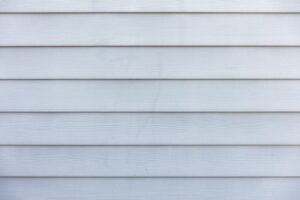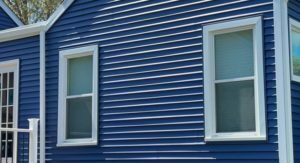Introduction
When it comes to protecting and beautifying your home, few things are as impactful as home siding installation. Proper siding not only shields your house from the elements but also dramatically enhances its curb appeal and increases its market value. Whether you’re dealing with worn-out siding or planning a fresh upgrade, understanding the basics of siding installation is crucial.
Installing new siding involves more than just attaching materials to your home’s exterior. It requires careful planning, selection of the right materials, and precise execution to ensure your home stays protected and looks great for years to come. The benefits are manifold; from increased energy efficiency due to better insulation to reduced maintenance costs over time.
For homeowners in Southern or Eastern Massachusetts, where weather conditions can vary drastically, choosing the right siding material and ensuring a professional installation is especially important. Siding acts as a barrier against cold winters and humid summers, keeping your indoor environment comfortable and safeguarding the structural integrity of your home.

Understanding Home Siding Installation
Choosing the Right Siding Material
When selecting the material for your home siding installation, consider three popular options: vinyl, fiber cement, and wood. Each has its benefits and suitable applications depending on your climate, budget, and aesthetic preference.
- Vinyl Siding: This is a cost-effective choice and offers excellent durability and low maintenance. It doesn’t need painting and can withstand various weather conditions without corroding or fading. Ideal for those looking for a practical, hassle-free option.
- Fiber Cement Siding: Known for its robustness, fiber cement siding resists fire, wind, and termites, making it a superb option for areas prone to such hazards. It mimics the appearance of natural wood and can be painted to suit your home’s style.
- Wood Siding: For a classic look, wood siding offers unmatched natural beauty. It requires more maintenance, including regular painting or staining to prevent decay and damage from insects. Wood siding is perfect for those who prefer a traditional aesthetic and are willing to invest in upkeep.
Necessary Tools for Installation
Proper tools are crucial for a successful siding installation. Here’s what you’ll typically need:
- Hammer: Essential for driving nails securely without damaging the siding.
- Level: Ensures your siding panels are perfectly horizontal and aligned.
- Tape Measure: Critical for precise measurements, ensuring that cuts are accurate and minimize waste.
- Zip Tool: A specialized tool used for vinyl siding, allowing you to remove or adjust panels after they’ve been installed without damaging them.
Preparation
Before you begin the installation, make sure the exterior walls are ready by:
- Cleaning the Surface: Remove any dirt, debris, or old material from the walls.
- Inspecting for Damage: Repair any issues in the wall that may affect the stability or attachment of the new siding.
- Installing a Water-resistive Barrier: This layer protects your home from water infiltration, which can cause mold and structural damage.
Choosing the right materials and tools and properly preparing the installation surface are key steps in home siding installation. These ensure that the siding will not only look great but also perform well for years to come, protecting your home against various environmental elements.
Step-by-Step Guide to Home Siding Installation
Embarking on a home siding installation project can dramatically improve your home’s aesthetic and its protective capabilities. Here’s a simplified guide to help you through the installation process from start to finish.
Step 1: Remove Old Siding
Safety first! Before you begin removing the old siding, make sure you wear gloves and safety goggles to protect against sharp edges and debris. Utilize a zip tool to unhook the panels of vinyl siding, starting from the top and working your way down. For other materials like wood, a pry bar might be necessary. Collect all removed materials for proper disposal, recycling if possible, to keep your work area clean and organized.
Step 2: Prepare the Surface
Once the old siding is removed, inspect the sheathing for any damage. Replace any rotten or damaged sections to ensure a stable base for your new siding. Next, install a water-resistive barrier by rolling it over the sheathing and securing it with cap nails. This barrier is crucial as it prevents water from seeping behind the siding, which could lead to mold and structural issues. Lastly, apply flashing around windows and doors to divert water away, preventing any potential water damage.
Step 3: Install Starter Strips and Trim
Begin by installing starter strips at the base of the wall. These strips help ensure your siding panels remain level and secure. Make sure the strip is level before nailing it in place. Following the starter strips, install inside and outside corner posts. These not only add to the visual appeal but also protect the edges of the siding from weather elements. Ensure that each piece overlaps slightly to maintain a continuous barrier against moisture and debris.
Step 4: Install Siding Panels
Start from the bottom and work your way up, ensuring each panel is securely locked into the one below it. Use a level to check alignment periodically. Nail the siding loosely to allow for expansion and contraction due to temperature changes. Overlap the ends of the siding panels by about one inch to minimize visible seams and enhance weather resistance.
Step 5: Add Finishing Touches
Install J-trim around windows and doors to give a clean, finished look and to keep water from infiltrating behind the siding. Caulk all necessary areas, especially around windows, doors, and where different materials meet, to seal any gaps. A final inspection is crucial to ensure everything is correctly installed and secure. Check for any loose panels and ensure all trim is neatly applied.
By following these steps, you can ensure your home siding installation not only boosts your home’s curb appeal but also enhances its resilience against environmental factors. Proper installation is key to long-lasting protection and aesthetics.

Maintenance and Care for Your Home Siding
Preventing Siding Damage
To keep your home looking great and to extend the lifespan of your siding, focus on preventing damage. Here are some practical ways to protect your siding:
- Weather Protection: Ensure that your siding material is suitable for your local climate. For instance, fiber cement siding is excellent for areas with high humidity or frequent storms because it resists rot and moisture damage.
- Impact Avoidance: Keep trees and bushes trimmed back from your home. This prevents branches from scraping against the siding during windy conditions and reduces the risk of physical damage.
Routine Siding Maintenance
Regular maintenance is crucial to keep your siding in top condition. Here’s a simple routine you can follow:
- Cleaning: Wash your siding annually with a gentle cleaner and a soft brush or cloth to remove dirt and grime. For vinyl siding, a solution of 30% vinegar and 70% water works well as a natural cleaning agent.
- Regular Checks: At least twice a year, inspect your siding for any signs of damage such as cracks, warping, or loose panels. Pay special attention to areas near gutters and downspouts where water damage is more likely.
- Immediate Repairs: If you notice any damage, address it promptly to prevent further deterioration. Small cracks or holes can be sealed with caulk to prevent water from infiltrating and causing more significant issues.
- Cleaning Methods: For tougher stains on fiber cement siding, a mildew-resistant cleaner can be used. Always follow the manufacturer’s instructions for specific cleaning recommendations.
- Inspection Tips: Look for signs of moisture in your attic or crawlspace, as this can indicate that water is penetrating your siding. Also, check for peeling paint or discoloration, which could suggest underlying issues.
By implementing these maintenance and care strategies, you ensure that your siding remains beautiful and functional, protecting your home for years to come. Regular upkeep not only enhances curb appeal but also prevents costly repairs in the future.
Frequently Asked Questions about Home Siding Installation
How much does home siding installation cost?
The cost of home siding installation can vary widely depending on several factors. These include the type of material chosen, the size of your home, and the complexity of the installation. On average, homeowners might spend between $6,000 and $16,000. For instance, vinyl siding installation costs around $2 to $5 per square foot for labor, while fiber cement siding can range from $4 to $10 per square foot for labor. It’s always best to get a detailed quote from a professional to understand the specific costs for your project.
Is installing siding a difficult task?
Installing siding can range from moderately challenging to very complex, depending on the material and your DIY skills. Vinyl siding is considered one of the easier materials to install and is often recommended for those looking to DIY their siding project. However, materials like fiber cement require more expertise due to their weight and the need to handle them carefully to avoid breakage. For most homeowners, hiring a professional is advisable to ensure the installation is done correctly and to maintain the material’s warranty.
What is the cheapest way to install siding on a house?
The most economical siding option is typically vinyl siding. Not only is the material itself less expensive compared to options like wood or fiber cement, but it also requires less maintenance over time, which can save money in the long run. Vinyl siding is lightweight, making it easier and cheaper to transport and install. For those on a tight budget, lower-grade vinyl siding provides a cost-effective solution while still offering durability and an appealing look. However, it’s important to balance initial costs with long-term value, as some cheaper materials may need more maintenance or replacement sooner.
By understanding these key aspects of home siding installation, homeowners can make informed decisions that align with their needs, budget, and long-term home maintenance plans. Whether choosing to hire a professional or tackling the project DIY-style, it’s crucial to consider the complexity of the job and the specific requirements of the chosen siding material.

Conclusion
As we wrap up our guide on home siding installation, let’s review the key points we’ve covered and offer some final thoughts and tips to ensure your siding project is successful.
Review
We’ve explored the diverse materials available for siding, from economical vinyl to durable fiber cement and classic wood, each offering unique benefits and aesthetic appeal. We’ve also discussed the essential tools needed for the job, preparation steps, and a detailed step-by-step installation guide. The right preparation and installation techniques are crucial for a long-lasting finish that protects and enhances your home.
Additional Tips
- Measure Twice, Cut Once: Always double-check your measurements before cutting materials to avoid waste and ensure precision.
- Weather Watch: Plan your installation for a period of mild weather. Extreme temperatures can affect the fitting and adherence of materials.
- Safety First: Always use appropriate safety gear, including gloves, goggles, and helmets, especially when working at heights.
Reliable Roofing
At Reliable Roofing, we’re committed to helping you achieve the best results in your home improvement projects. Our team of experts is equipped with the knowledge, tools, and experience to ensure your siding is installed flawlessly. We understand the importance of a well-protected and aesthetically pleasing home, which is why we stand by the quality of our work and the durability of our materials.
By choosing Reliable Roofing, you’re not just getting a service provider—you’re gaining a partner dedicated to enhancing the value and beauty of your home. We offer comprehensive warranties and attentive customer service to ensure you’re satisfied with the outcome of your project.
In conclusion, whether you decide to undertake siding installation as a DIY project or opt for professional help from Reliable Roofing, proper planning, and execution are key. By following the guidelines we’ve discussed, you’ll be well on your way to a successful installation that not only boosts your home’s curb appeal but also its overall protection and value. Your home’s siding is its first defense against the elements, so choosing quality materials and ensuring proper installation are investments in your home’s future.



